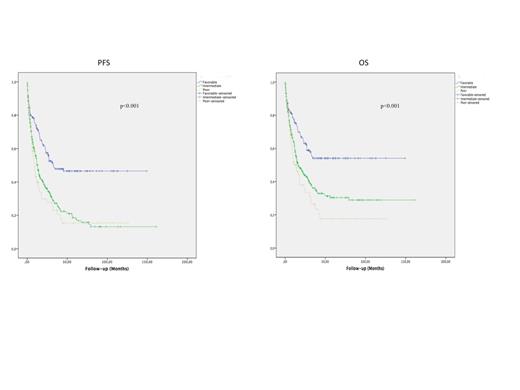Background: It is evident that treatment outcomes improve with the clinical studies, in this study we aimed to investigate the demographics and treatment modalities of the acute myeloid leukemia (AML) patients in a large population-based cohort who were diagnosed and followed up in Turkey as a real-world data.
Methods: All AML adult patients who were recorded on the database of Turkish AML Registry project from 25 sites were included in this study if they were diagnosed before 1st of June 2022. Study approved by ethics committee and Ministry of Health of Turkey. Demographics and disease related parameters both at the time of diagnosis and at the follow up and treatment outcomes were presented.
Results: A total of 906 patients were included in the study, 891 patients data accepted as adequate and underwent further evaluation. Median follow-up period was 12.0 (SD:26.6) months and 45.4% of the patients were female. Median age at the time of diagnosis was 58 (18-91). According to the FAB classification most common subtypes were M4 (23.6%), M2 (21.6%), M5 (16.8%) and M1 (13.5%) and AML, NOS (36.9%) is the most common type according to the WHO classification. Of the patients 60.8%, 24.7%, 14.5%, was intermediate, favorable and poor respectively considering AML risk stratification (ELN 2017) by genetics. Only 4.4% of the patients had extramedullary involvement. For the first induction 70.8% of the patients had received intensive regimens composing anthracyclines and ARA-C and for the first relapse 71.8%. ARA-C (71.7%) backbone and Azacitidine alone (13.4%) are the most used regimens, 10.5% and 22.5% underwent allo-HCT during the first and second induction respectively. Response rates obtained by the induction therapies were as follows; 61.7% CR (including 9.3% MLFS), 14.2% PR, 8.6% SD, 15.5% PD, the ratio was 59.7% and 24.3% for CR2 and PD respectively. Median overall survival has not been reached for the favorable risk group, were 16.2 months for the intermediate risk and 14.1 months for the poor risk group (p<0.001) and 22.7 months for the entire population. Median progression free survival were 32.6 months for the favorable risk group, 12.7 months for the intermediate risk and 9.4 months for the poor risk group (p<0.001) and 15.2 months for the entire population (Figure 1). COX regression analysis were performed for the prognostic factors of OS, univariate analysis performed with the parameters; age (<60 and ≥60), FAB classification, ECOG, FLT3, NMP1, HCT were accepted as clinically significant covariates. First univariate then with the significant parameters (p<0.05) multivariate COX regression analysis were perfomed. With the multivariate analysis age (p:0.005, HR:2.140, 95% CI: 1.254-3.653), FAB classification (favorable were reference, intermediate p:0.045, HR: 2.269, 95% CI: 1.017-5.064, poor p:0.217, HR: 2.105, 95% CI: 6.858) and HCT (p:0.034, HR:2.618, 95% CI: 1.073-6.387) were found as significant.
Conclusion: Progression free survival obtained after induction therapy and overall survival were relatively shorter than the ones which were presented by other real-world registries. Lack of early access to the targeted and novel agents, like Flt3 inhibitors, Venetoclax, IDH1 and 2 inhibitors, CPX351 and Glasdegib should be a potential explanation to this relatively short PFS and OS. We have also been aware of un-ideal access to well established and nation wide cytogenetic laboratory service to induce early integration of targeted agents to the treatment and better risk stratification to determine the patients who should obtain the best prolonged survival via allo-HCT.
Disclosures
No relevant conflicts of interest to declare.


This feature is available to Subscribers Only
Sign In or Create an Account Close Modal